Necessity is the mother of invention, they say, and nowhere is that dictum more convincing than in the arena of food.
Many regard Nicholas Appert’s discovery of the retort process in the early 19th century as the seminal event in modern food processing history. His goal: find a method of preserving food for French soldiers during Napoleon’s invasion of Russia. Today, 21st century food engineers and technologists continue to develop ways of coping with more formidable challenges – hunger, food supply, quality, packaging, foodborne illness, and a wide variety of food contaminants. Their efforts to bring an enormously wide and diverse supply of economical, good-tasting, nutritious foods to the people of the world is as important to our country as its fundamental liberties.
The work of the industry’s finest should not pass to posterity uncelebrated. And so, with great pleasure Food Engineering celebrates its 75th anniversary with this salute to the individuals who have made innovative, far-reaching contributions to the food industry. Through scientific research, engineering, entrepreneurial energy, dreams, and bold endeavor, they have not only left their mark but left a legacy that the world – quite literally—lives by.
So, hats off to all those honored in this special 75th Food Engineering Anniversary Hall of Fame issue for their remarkable dedication and achievement. Our thanks goes to the food companies, government agencies, associations, educational institutions and distinguished industry alumni who have helped single out these pioneers and innovators. Our thanks, too, to those whose great contributions did not make it into these pages but whose work goes on and on.
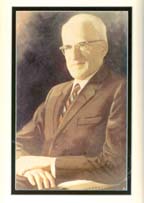
C. Olin Ball
Submitted by: USDA
C. Olin Ball was a food technologist, born in Abilene, KS. While in graduate school at George Washington University (1919-22) he researched sterilization of canned foods for the National Canners Association. In 1923, he published the first well-defined mathematical method for establishing thermal processes for canned foods. The “Ball Formula Method” has since become the most widely used method in the U.S. for evaluating the sterility value achieved in canned foods during thermal processing.Dr. Ball took the discovery of kinetics of destruction of microorganisms and mathematical description of heat transfer and combined them to provide a method for designing the heat treatment that should be applied to foods to render them commercially sterile. His methods allowed the canning industry to demonstrate to regulatory agencies that they were applying processes that delivered safe canned products to the consumer. The Federal Regulatory Agency (FDA) adopted his mathematical methods for calculating thermal processes as the gold standard.
From 1922-1941 he worked for the American Can Company in Illinois and New York where he generated some of his 29 patents, including the basic heat-cool-fill canning method (1936), the method and apparatus for open can sterilization (1937), and processes for canning milk (1938-39). He worked for the Owens-Illinois Glass Co (1944-46) and taught food science at Rutgers University (1949-63). He was a founding member of the Institute of Food Technology (1939).
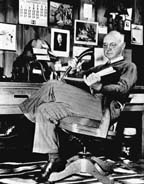
Clarence Birdseye (1886-1956)
Submitted by: Birds Eye Foods
As field naturalist for the United States government, Clarence Birdseye’s work took him to the Arctic where he made a chilling discovery that would change the history of the food industry.He noticed that freshly caught fish, when placed onto the Arctic ice and exposed to the icy wind and frigid temperatures, froze solid almost immediately. He learned, too, that the fish, when thawed and eaten, still had all its fresh characteristics. He concluded that quickly freezing certain items kept large crystals from forming, preventing damage to their cellular structure.
In September 1922, Birdseye organized his own company, Birdseye Seafoods, Inc., where he began processing chilled fish fillets at a plant near the Fulton Fish Market in New York City. In 1924, he developed a process that later would become his great contribution to the art of quick-freezing: packing dressed fish or other food in cartons, then freezing the contents between two flat, refrigerated surfaces under pressure.
Birdseye decided to form a new company to capitalize on his invention. In 1924, he organized the General Seafood Corporation. The beginning of retail frozen foods occurred in 1930, in Springfield, MA. The “Springfield Experiment Test Market” included twenty-six different vegetables, fruits, fish and meats.
Birds Eye contracted with the American Radiator Corporation to manufacture inexpensive, low-temperature retail display cooling equipment. By 1944, Birds Eye had leased the first insulated railroad cars designed for nationwide food distribution. Birds Eye was also the first to introduce foil overwrap on boxed vegetables, which holds moisture ten times better than waxed paper.
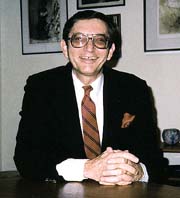
Dr. Andre Bolaffi
Submitted by: Standard Foods China
Dr. Andre Bolaffi developed the first commercial disposable “inert” plastic bottle for the beverage (still and carbonated) industry. The development, successfully executed at PepsiCo Inc., involved every phase of fundamental and applied research.While at General Foods Corporation, Ralston Purina, United Brands and Dunkin’ Donuts, Inc., Dr. Bolaffi directed research and subsequent development, start-up manufacturing and distribution of food products which were executed in the United States, Japan, the Philippines and Honduras.
He also developed a unique flexible package with a one-way functional valve. The package was designed to preserve freshness of roasted coffee beans during storage, through a system, which effectively allowed the evolution of carbon dioxide while preventing entry of any other gas. This patented atmosphere-controlling breakthrough significantly increased shelf life, quality and sales of coffee.
Dr. Bolaffi’s other technical achievements include super critical fluids extraction technology (SCFE) for the isolation and separation of sensitive oil components in snack foods; microwave technology for the proofing of bakery items and drying of snack foods and vegetables; vacuum frying technology for the development of novel nutritious food snacks; microencapsulation technology for the precise time release of leavening agents, flavors and other reactants in a formula; air impingement technology for increased effective drying of food products; biotechnology for the development of new functional flavors, wheat, fats and oils and starches; irradiation technology for use as a sources of cross-linking to create edible polymers and new food textures.
He received his B.A. from Brandeis University and his M.S. and Ph.D. in food science and technology from Rutgers University.

Adolph S. (Al) Clausi
Submitted by: Kraft
Adolph “Al” S. Clausi retired from General Foods in July 1987 after 41 years with the company. While still a junior chemist, he made his first significant invention, Jell-O Instant Pudding. Clausi also invented instant chiffon pie fillings and a number of other prepackaged dessert items based on gelatin, starch and gums.He further worked on the process development of one of the first dehydrated mashed potato products. While with the Post Cereal Division of General Foods, he invented a series of innovative ready-to-eat shaped cereals that have become an important segment of the cereal industry. Clausi’s research team pioneered a number of other food products, such as Tang, whose vitamin fortification made it an early functional beverage. The first intermediate-moisture pet food, GainesBurgers, is also credited to his team. This product was the first to combine proteinceous meat and vegetable components at moisture levels that would normally support bacterial growth by using soluble solids such as sugar to bind the water into a bacteriostatic state, enabling prolonged storage without hermetic packaging at room temperature.
One of his unique contributions to world food security was the creation of the World Food Prize, a $250,000 award given annually to an individual who has contributed in a major way to the quality, quantity, or availability of the world’s food supply.
Clausi also served as President of IFT from 1993-1994. He won the IFT International Award in 1987 and received the 2001 Nicholas Appert Award, IFT’s highest honor, which recognizes an individual for preeminence in and contributions to the field of food technology.

Joe Clayton
Submitted by: USDA
Joe Todd Clayton, Emeritus Professor of Food Engineering, University of Massachusetts, Amherst, was the organizer of the first international conference on Engineering and Food in the late 1960s. A registered professional engineer, Clayton attended the University of Tennessee, University of Illinois and Cornell University where he received his Ph.D. He served on the faculty of University of Illinois, University of Connecticut and the University of Massachusetts becoming department head at University of Massachusetts.He was a NSF Science Faculty Fellow at Cornell University and visiting Professor, U. Reading, England and National College of Food Technology, Weybridge, Surrey, England in 1970 – 1971. He was a Japan Society for the Promotion of Science Fellow, University of Tokyo and University Hokkaido, Sapporo, Japan in 1978 and was invited to be a cooperative researcher at the U.S. Army Labs, Natick, MA.
His research interests include studies of the responses of plants and animals to physical environment factors, engineering properties of foodstuffs, food storage, processing, and protection from mechanical damage and contamination.
He has published extensively in technical and scientific journals and meeting proceedings, as well as numerous trade journals. He was chairman of the Organizing Committee and Convenor, First International Congress on Engineering and Food, University of Massachusetts in 1976. Clayton received the UNAM Silver Medal “in recognition of leadership in the development of the field of Food Engineering” Mexico City, 1981.
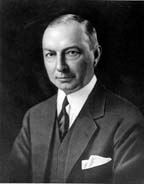
John Dorrance
Submitted by: Campbell Soup
Considered the “father of condensed soups,” John T. Dorrance was born in 1873. In 1897, after graduating from Massachusetts Institute of Technology (MIT) with a degree in chemistry, John was reluctantly hired by his uncle, Arthur Dorrance as a company chemist at a token wage of just $7.50 a week.Using his own laboratory equipment, Dr. Dorrance developed the formula for commercially condensed soups. By removing the water, the volume of a can of soup was reduced from 32 ounces to approximately 10 ounces, and the price lowered from about 34 cents to a dime. The five original varieties were tomato, consomm?vegetable, chicken, and oxtail.
To help make sure the soups were a success, Dr. Dorrance undertook the task of convincing housewives to buy canned soup instead of making their own at home by showing them that Campbell’s soups were tasty, inexpensive, and incredibly time-saving.
In 1914, Dr. Dorrance was named President of the company. In 1921 the company was renamed the Campbell Soup Company, reflecting its most famous and profitable product. Dr. John T. Dorrance died in 1931 and was succeeded as president by his brother, Arthur C. Dorrance.
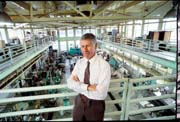
Dr. Daniel Farkas
Submitted by: USDA
Dr. Farkas was a part of the team of engineers that Dr. Arthur Morgan assembled at Western Research Laboratory in Albany, CA. His research was original and innovative relying on engineering and physical principles applied to food processing operations. Among his many innovations are advances in fluidized bed drying and development of the helical pump for thermal processing operations. His most recent contributions are in high pressure processing where he was a pioneer in developing a fundamental understanding of the process.From 1987 to 1990 he was vice president of Process Research and Development at the Campbell Soup Co. Camden, NJ. Prior to joining Campbell Soup he was chair of the Department of Food Science at the University of Delaware from 1980 to 1987 and was research leader of the Process Development Group at the USDA Western Regional Research Center in Berkeley, CA, from 1967 to 1979. He was an assistant professor of Food Processing Extension at the Cornell University New York State Agricultural Experiment Station, Geneva, NY, from 1962 to 1966 and a Staff Scientist in Arthur D. Little’s Food and Flavor Group from 1960 to 1962. Dr. Farkas holds three degrees in Food Science from the Massachusetts Institute of Technology and is a Registered Chemical Engineer in California.
His research interests include the application of high pressure to food preservation, food preservation by ionizing radiation, and the development of novel equipment for heat sterilization and flash dehydration of foods. He has published over 90 papers and holds five patents. He received the 2002 Nicholas Appert Award from the Institute of Food Technologists for work on high-pressure preservation, drying, freezing, and thermal processing equipment innovations.
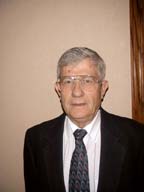
Felix Germino
Submitted by: Bolaffi International
and Foodservice Advanced Science & Technology Inc.
While serving as head of R&D for Quaker Oats Company, Felix Germino developed a soft-moist technology that led to the very successful development and marketing of the first soft, chewy snack bar. A similar technology was developed and applied to semi-moist pet foods. In fact, a unique re-design of single screw extenders resulted in a high-pressure extrusion system with 250 percent increase in performance. These extrusions significantly improved operating efficiency and dramatically reduced capital costs.In the area of starch research, he identified and utilized the unique polymer properties of granular (corn & potato) and waxy starches. These starches not only maintained their granular characteristics with some polymerization, but also were free flowing, non-hygroscopic and soluble in cold water. These functional attributes became extremely important in a whole series of “dry mix” food formulated products.
Similarly, his research involving the crystalline behavior of amylose led to the discovery that quick drying a non-crystalline amylose from a solution (rather than from a dry state) could produce a water-soluble amylose. This discovery led to the development of cold water soluble instant gelling starches with novel application to a wide spectrum of food in supermarkets worldwide.
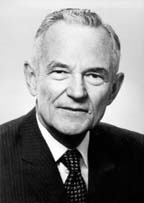
Dr. Richard L. Hall
Submitted by: McCormick & Co., Inc.
Beginning in 1950, Dr. Hall was key in the significant evolution of the science and technology base at McCormick as well as the development of the company’s research effort.During the fifties, Dr. Hall helped transform the traditionally based spice and herb industry to an industry based on science and technology.
In the ‘60s and ‘70s, Dr. Hall was instrumental in the development of scientific safety evaluation of flavors. This resulted in the FEMA Expert Panel and the GRAS listing of flavor materials, which is recognized not only by the industry but also by the FDA. Assisting in the process of expanding this concept into Europe, he continues to be a key toxicology resource for the entire flavor industry.
Dr. Hall was vice-president-Science & Technology and a member of the Board of Directors of McCormick & Company, Inc., until his retirement in 1988.
He joined McCormick as a research chemist in 1950. In 1951 he was appointed research director and in 1957, director of Research and Development. From 1968 to 1975, he was vice president-Research and Development.
Dr. Hall is a past president of the International Union of Food Science and Technology and a past president of the Institute of Food Technologists (IFT). He organized IFT’s food safety and nutrition information program.
He is the author, co-author, or co-editor of more than 80 scientific and professional articles and books and has received the Nicholas Appert, International, Fellers, and Oser Awards of the IFT, the Kohnstamm Prize in Industrial Chemistry, and the 25th Anniversary medal of the Polish Academy of Sciences.
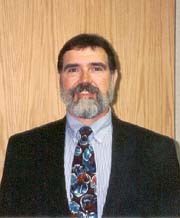
Bernie Hansen
Submitted by:
North American Meat Processors
Bernie Hansen, president of Flint Hills Foods, L.L.C., in Alma, KS, is a leader in the meat industry, an outspoken proponent of positive change and initiative, and an effective and successful entrepreneur driven to meet the needs of the consumer.Hansen is a past president of the North American Meat Processors Association (1994-95), the American Association of Meat Processors (1990-91), and the Kansas Meat Processors Association (1981). He is past president of the Committee of Kansas Farm Organizations, and has served as chairman of the council of the Value-Added Processing Center at Kansas State University. Beyond these accomplishments, Hansen has also received a number of awards for his outstanding achievements in the meat processing industry, including the “Angus Award” – the highest and most prestigious award in recognition of prolonged, sustained and devoted service to the association and the industry.
A graduate of Kansas State University in 1970 with a BS degree in Agriculture Education, he entered the meat business in 1971 as a sales representative for Fanestil Packing Company. A year later, he joined Flint Hills Foods as a sales representative and shortly thereafter became general manager and part owner. In 1980, he purchased the company and over the course of the following 23 years, has strategically grown the company, diversifying its product line, and ultimately driving the evolution of the company from a tiny custom processing plant into a manufacturer of fully cooked meats.
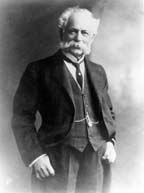
Henry John Heinz
(1844 – 1919)
Submitted by: H.J. Heinz
Henry John Heinz began selling his mother’s prepared horseradish in 1866, and sowed the seeds of one of American’s best-known food companies. In 1869, he and his friend, Clarence L. Noble, founded Heinz and Noble, the forerunner of the H.J. Heinz Company. By 1873, the company was a major producer and purveyor of a wide range of condiments including celery sauce, pickle cucumber, sauerkraut and vinegar. Heinz worked with government research stations and county agents to experiment with breeding plants for greater yield, earlier maturing and other advances.A man of many talents, he was an agronomist, inventor, collector of recipes, salesman, package designer and marketer. Heinz became one of the first U.S. companies to expand internationally with sales branches and factories established in the United Kingdom (1905) and Canada (1909).
Heinz also supported and promoted the passage of a pure food and drug law that would mandate safety standards for the industry.
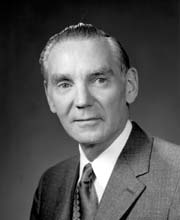
G. Howard Kraft
Submitted by: Kraft Foods
G. Howard Kraft designed and developed equipment for many food/packaging applications during his 43-year career at Kraft. He had 17 patents of his own and assisted countless other inventors. Most notably, Kraft invented the first commercially feasible process for applying modified atmosphere packaging to the packaging of food product—gas flushing. His process and equipment, patented in 1960, are now used to package billions of food products across the world each year. Other notable contributions include the development of equipment to process cheese whey and the design and implementation of the Chill Roll process for making cheese slices.The nephew of J.L. Kraft, G. Howard Kraft was born in 1908 in Chicago, IL. He graduated from Northwestern University in 1930 and began work immediately as one of two engineers at what was then called the Kraft-Phenix Corporation. In 1947, he headed Engineering Planning; in 1962 he was appointed chief engineer, and general engineering manager in 1970. He retired in 1973 as vice president of engineering.
Not only did he apply engineering principles to food processing and packaging, but he also designed and built plant and office space/buildings for Kraft. He converted many batch-type processes and equipment to continuous processes. He worked on many of the Kraft products over the years, including natural cheese, process cheese, and margarine.
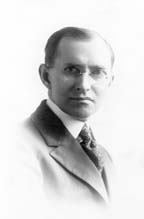
J.L. Kraft
Submitted by: Kraft Foods
J. L. Kraft started his company in 1903 at the age of 29, after moving to Chicago from the farm he grew up on in Ontario, Canada. With $65 in capital, a rented wagon and a horse named Paddy, he began purchasing only the highest quality cheese at Chicago's Water Street wholesale market and reselling it to local merchants. Kraft is considered to be the first to offer branded cheese. Within a short time, four of Kraft's brothers joined him in the business. In 1914, Kraft and his brothers purchased their first cheese factory in Stockton, IL.Cheese was a highly unpredictable commodity at the time. But in 1915, Kraft introduced Sealkraft cheese in four-ounce cans. With its consistent flavor and lasting freshness, qualities that cheese makers had sought for centuries, it became an immediate hit. Kraft's method of producing processed cheese was revolutionary, and, in 1916, he obtained a patent for it. That process gave Kraft a competitive advantage over other cheese suppliers when imports of natural cheese were curtailed during World War I. At that time, the U.S. government became Kraft's largest customer until the war ended in November 1918. The product also created the foundation that allowed Kraft to become one of the largest cheese companies in the world.
Kraft also used innovative advertising to promote his products and was a pioneer in the sponsorship of television and radio shows.

Theodore P. Labuza
Submitted by: USDA
Dr. Theodore P. Labuza brought physical chemistry and engineering principles to enhance understanding of phenomena occurring in foods. He authored several influential and seminal papers on water activity in foods. He was one of the pioneers in quantitative description of glass transitions in food and the influence of these transitions on food quality parameters including chemical reactions and texture modification.From his early career as an associate professor of food engineering at Massachusetts Institute of Technology (MIT) to his current position as professor of Food Science and Technology at the University of Minnesota, Dr. Labuza’s research interests span the physical chemistry of foods with emphasis on reaction kinetics, water activity, and the glass/rubber state. Other areas of pursuit include shelf life testing; food packaging and edible film barriers; time temperature integrators; the impact of food laws and regulations on technology; active packaging materials and bio-sensors; new food technologies; and scenarios for bio-terrorism.
In June 1998 he received the IFT Nicholas Appert Award, the IFT Marcel Loncin Research Prize in Food Engineering, and the President’s Award, University of Helsinki, Finland. Among his more recent honors are the 2000 Outstanding Scholars of the 21st Century (2001); Institute of Food Science and Technology (UK) elected Fellow 2000; the CHE McFarland Outstanding Teaching Award (2001); and the ISI Most Highly Cited Scientists List for the past 20 years in Agricultural and Food Science.
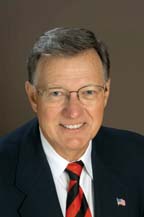
Daryl Lund
Submitted by: USDA
Daryl Lund’s research interests in food engineering include fouling and cleaning in food processing operations, kinetics of food quality and nutrient changes in foods, microwave-assisted food processing operations, and optimization of product quality.His landmark research into fouling in thermo-processing equipment has helped both food manufacturers and equipment makers design machinery to minimize production problems, optimize heating and cleaning intervals, determine effects of heat on flavor, improve process efficiency and minimize production costs. These efforts in thermo-processing included both theoretical and experimental research and mathematical modeling.
Renowned for his industry leadership as well as his research accomplishments, he is past president of the Institute of Food Technologists. He has also played an instrumental role in the land grant university system.
He has served as a department chairman at the University of Wisconsin-Madison and Rutgers University and as Dean of the College of Agricultural and related Sciences at Rutgers University and Cornell University. He has held his current position as executive director of the North Central Regional Association of State Agricultural Experiment Station Directors since January 2001. He is contributing author to more than 200 scientific papers, edited or co-edited five books, co-authored a major textbook, and received numerous professional awards and honors. He chaired the Food and Health Drafting Committee of the NASAULGC Food and Society Initiative and continues to serve on its Planning Committee. Dr. Lund completed his Ph.D. studies at the University of Wisconsin-Madison in 1968.
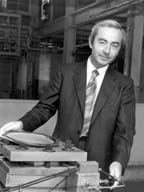
Arthur Morgan
Submitted by: USDA
For twenty years, Arthur Morgan conducted research at the Western Regional Research Center of the USDA in Albany, CA. With a variety of colleagues, he accomplished projects intended to improve the use, quality, and safety of agricultural products.Morgan created several new food dehydration methods and invented foam mat drying, an entirely new method for drying food liquids by converting them into dense, stable foams. The method was licensed and used by Gerber's, American Machine & Foundry, Kikko Foods, General Foods, Tillie Lewis Foods, and Ventura Coastal Corp.
Morgan also developed a new way to remove the colored bran from grains and created several ways to restore the original aromas of foods.
He changed the way vegetables are peeled after noting that vegetable waste was the largest water pollution source in the food processing industry. Morgan proposed the WURPEEL process in which the potato is sprayed with strong alkali; conveyed on rollers under gas-fired radiant heaters as the peel is brushed off. He later took part in adapting the method to tomatoes by adding a skin slitting knife before the weakened peel is wiped off by rubber disks, in place of the brushes used for potatoes.
Morgan created two new kinds of evaporators and improved the operation of others. His studies of fouling identified which conditions are important in various uses. Hundreds of these evaporators have been installed in U.S. tomato canneries.
Morgan created the first continuous freeze dryer. His system was used by California Vegetable Concentrate, Kaffeehag and Nestle.
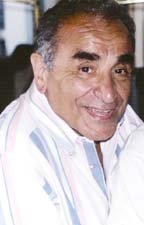
Ray Moshy
Submitted by: ConAgra
Dr. Raymond J. Moshy led a distinguished career of more than 40 years in food science and technology. His career was marked by publications and patents and tireless efforts and contributions to the field of education in Food Science.After a very successful career at Hunt-Wesson, Dr. Moshy assumed the presidency of ESACAgenetics Corporation, the world’s oldest agricultural biotechnology company both as chief executive officer and chief scientist. He quickly recognized the significance of this technology and its impact on food processing. He was not only the first to use the principles of biotechnology for the development of new foods, but he was also the first to apply the combined disciplines of “modern biotechnology” (i.e. plant breeding and agronomy, tissue culture, molecular biology and biochemical engineering) to food processing.
The application of biotechnology to the development of natural flavors and flavor intensity is a scientific breakthrough of enormous impact. Dr. Moshy reasoned that the unique biochemical totipotency of plant cells could be exploited to produce the components that constitute natural flavors despite the fact that these flavor components are usually present only in the ripe fruit.
His company’s research proved that by harnessing the principles of biotechnology in conjunction with biochemical totipotency, it became possible to convert plant cells growing in tissue culture into efficient organic catalysts able to convert simple nutrients into valuable flavors.
His numerous publications and patents, and contributions to IFT and to food science higher education are added factors to his exemplary career in food technology.

Jeno F. Paulucci
Submitted by: National Frozen Food Association
Jeno F. Paulucci helped his family survive the Great Depression by selling fruits and vegetables in a Hibbing, MN, market at age 10. Thus began a lifetime food industry career that led him to create, finance or lead more than 50 companies and organizations worldwide in a career that has spanned 70 years.Today, at age 85, he has created more than 70 brands and built and sold companies worth more than $2 billion. His legacy includes the Chun King Corporation; Wilderness pie fillings; the Worldwide Cornelius Company and Jeno’s Inc. His creativity and energy brought revolutionary new products including the Chun King Divider-Pak and Jeno’s Pizza Rolls.
He pioneered domestication of wild rice on 5,000 acres of farms in Minnesota; launched RJR Foods Inc. (later RJR Nabisco) as its founding chairman; and is the creative mind behind dozens of patents for processes to prepare and package foods.
His Luigino’s, Inc. company today produces Michelina’s (named for his mother) and Budget Gourmet brands, making it one of the world’s leading producers of frozen entrees. Since 1990, Paulucci has created and continues to operate fine food companies producing frozen entrees, hand-held snacks, pizza and food service products for worldwide markets.
Paulucci was honored as United States employer of the year in 1972 for his employment practices, especially for the handicapped and disadvantaged. He represented the United States as Ernst and Young’s Number One Overall Entrepreneur and in June 2003 was inducted as a charter member of the World Entrepreneur Hall of Fame in Monte Carlo, Monaco.
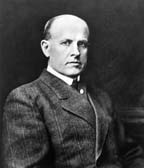
C.W. Post
Submitted by: Kraft Foods
In 1895, C.W. Post made his first batch of Postum cereal beverage in a little white barn in Battle Creek, MI. With that step he entered the brand new retail cereal industry. In 1897, he introduced Post Grape-Nuts cereal —a product that represented the beginning of the ready-to-eat breakfast food industry in the United States. He followed that success with a corn flakes product in 1904 which he called Elijah’s Manna (renamed Post Toasties in 1908).Post was a stickler for cleanliness, believing that a factory must “preserve the best of hygienic conditions. ” The company’s immaculately kept buildings were known collectively as the White City, a place where bakers bathed and changed clothes before starting their day’s work. His commitment to cleanliness led the way to modern-day Good Manufacturing Practices.
Regarding marketing, Post used techniques that are now considered industry standards, but which were innovative for their time. These included extensive advertising, coupons, free samples, product demonstrations, plant tours and recipe booklets.
Post died in 1914, but Postum Company continued to follow the formula for success that he had established: sell high-quality, nutritious cereal products through marketing and advertising techniques that appealed to the common man and woman.
Through the years, the management at General Foods refined and improved its product line and in 1981, General Foods acquired Oscar Mayer & Co., a leader in the processed meats industry. Four years later, General Foods Corporation was acquired by Philip Morris Companies, Inc. After Philip Morris acquired Kraft, Inc. in 1988, the two food subsidiaries were combined to form Kraft General Foods, Inc. in 1989.
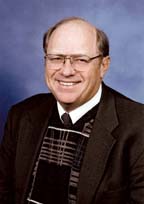
William E. Pursley
Submitted by: AIB – American Institute of Baking
With over 30 years of experience in the industry, William E. Pursley is renowned for his expertise in Food Safety solutions. He is one of the leading Food Safety trainers in the U.S. and worldwide. As a much sought after educator, he has carried out many special assignments dealing with hygiene problems for a variety of companies and has conducted numerous training seminars throughout the world.Pursley is the vice president of Food Safety Education for AIB in Manhattan, KS. He joined the institute in 1975 working as a food safety auditor and, later, as program director. He received his M.S. degree in Grain Science from Kansas State University.
Pursley offers technical assistance expertise by providing both money saving and practical solutions to everyday problems that the food industry faces. In 2001 he was a major player in providing technical assistance to the baking and flour milling industries in Japan at the request of one of the largest food companies in the world. Through his efforts, AIB International has developed a partnership with the Japanese School of Baking Technology to provide annual food safety and HACCP seminars and training of the Japanese staff to perform food safety audits in Japan.
Pursley has been a member of the Association of Operative Millers for a number of years and is on the Food Protection Committee. In 1988 he assisted in the third edition revision of Baking Science and Technology, which is a major technical text for baking students.
Pursley has also served as an expert witness in numerous food industry litigation cases.
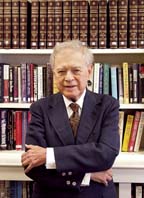
Henry Schwartzberg
Submitted by: USDA
Dr. Henry Schwartzberg, born 1925, B.Ch.E. Cooper Union, Ph.D. New York University, worked or consulted for General Foods/Kraft Foods for 36 years, taught Chemical Engineering for 7 years at NYU, Food Engineering for 17 years at the University of Massachusetts and lectured widely abroad.With coworkers he developed superposition-based methods for analyzing and designing solid-liquid extractors for foods; developed methods for accounting for axial dispersion and displacement instability in extractors and for analyzing and predicting other aspects of extraction behavior; and developed thermodynamically-based correlations for the thermal properties of freezing and thawing foods and illustrated their use in predicting freezing and thawing behavior.
Other achievements include the sequential analysis method for determining rates of growth or shrinkage of ice crystal size groups during Ostwald ripening and development of absorption-driven coolers, freezers and evaporators for foods. He also measured and correlated aroma loss in evaporators and developed methods for aroma recovery; developed new ways to analyze mechanical expression of liquid from liquid-rich solid foods; developed methods for predicting bean heating during coffee roasting; measured puffing-related properties of foods and used them in modeling how foods expand during vapor-induced puffing; studied the kinetics of protein-cross-linking reactions during extrusion texturization; developed a method for predicting diffuse optical reflectance from porous foods; determined how pore size affects microwave energy absorption and reflection in porous foods; and obtained patents dealing with soluble coffee extraction, carbonation, carbonated-ice production and microwave freeze drying.
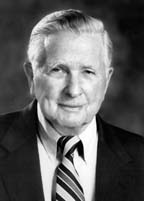
Robert E. Rich, Senior
Submitted by: Rich Products
As founder and chairman of the board of Rich’s, the nation’s largest family-owned $1.7 billion frozen foods manufacturer, Robert E. Rich has been recognized as one of American industry’s most successful innovators and entrepreneurs.In 1935 Rich was owner and operator of Wilber Farms Dairy, a milk products operation he later re-named the Jones-Rich Milk Company.
In 1945, Rich directed a team to investigate the use of soybeans in the manufacture of non-dairy topping products. The result was Rich’s® Whip Topping®, the world’s first frozen non-dairy whipped topping and the birth of Rich Products Corporation. His company pioneered the “Miracle Cream from the Soya Bean,” a product credited with launching the non-dairy segment of the food industry.
Rich continues to oversee a global operation that manufactures and distributes over 2,000 products in the food service, bakery/deli, and consumer retail markets.
In addition to Rich’s, Rich also chairs several other Rich Products companies, including Rich Kwality Foods, Ltd., Pune, India; Rich Products South Africa; Rich Products of Canada, Ltd.; Rich-Seapak Corporation, St. Simons Island, Georgia; the Rich Holdings Corporation, Buffalo; and Palm Beach National Golf & Country Club.
Throughout his extensive career, Rich has also received many distinguished awards including selection as one of the first four inductees into the National Frozen Food Industry Hall of Fame and recipient of the Frozen Food Industry Founder Award.
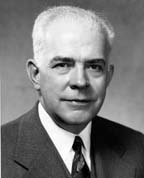
Herbert N. Riley
Submitted by: H.J. Heinz
Howard Heinz hired Dr. Herbert H. Riley, a 1912 graduate of the University of Pittsburgh, not long after Riley completed his studies as the company’s first bacteriologist.Riley was a pioneer in applying scientific methods to the processing, preservation and production of food products. He brought with him modern scientific methods and well-documented manufacturing processes.
While not revolutionary today, such activities as replacing a company-employed Italian opera singer who tested the drying of pasta noodles by hand with a $400 hygrometer proved to be monumental changes. In other scientific-based changes, salimeters were used to test the salt content of pickle brine instead of basic taste tests.
Dr. Riley insisted upon documented activities and process specifications and, importantly, upon scientific testing of the purity of finished product. In 1918, Riley coined the term “Quality Control Department” to describe the cadre of young men and women who continually monitored the quality of Heinz’s varieties. Riley began to apply scientific controls to improve product quality both in the research lab and on the production lines.
Riley’s work helped to establish rigorous guidelines for product quality and helped to move food manufacturing beyond secretive art and into the realm of science and technology. He also participated in the development of the 1938 Food, Drug and Cosmetic Act.
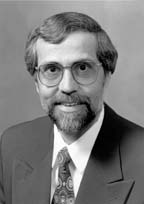
Dr. Paul Singh
Submitted by: USDA
Using computer-aided methods, Dr. R. Paul Singh has applied mathematical models to describe rate-governed processes applied to foods such as freezing, drying, thawing, and frying to improve product quality and process efficiency. His studies on time-temperature indicators have provided the scientific basis for their application in food distribution. At present, he is developing a food processing system for NASA’s manned mission to Mars.Dr. Singh is a co-author of the Introduction to Food Engineering—one of the most widely used textbooks in the field of food engineering. He is a fellow of the Institute of Food Technologists, American Society of Agricultural Engineers, and the International Academy of Food Science and Technology. He received the Samuel Cate Prescott Award for Research (1982), and International Award (1988) from IFT, Young Educator Award (1986) from ASAE, Food Engineering Award (1997) from the International Association of Food Industry Suppliers and the Grand Prix Research Award (2001) from the Japanese Food Machinery Manufacturers Association.
Dr. Singh is an author or co-author of 14 books and over 200 refereed papers. He frequently consults with the food industry and international agencies and he has contributed to research and educational programs in more than 35 countries.
He is also a professor of Food Engineering, Department of Biological and Agricultural Engineering and Department of Food Science and Technology, University of California at Davis. He received his Bachelor’s degree in Agricultural Engineering from Punjab Agricultural University, India, a Master’s degree from University of Wisconsin, Madison, and a Ph.D. from Michigan State University.

Charles E. Sizer
Submitted by: Pizzey’s Milling
Charles E. Sizer is currently the Director of the National Center for Food Safety and Technology (NCFST) and the Illinois Institute of Technology (1998-present). NCFST conducts the FDA counter-terrorism research on the behavior of select agents in foods.Sizer’s expertise is in aseptic processing and packaging, modeling of bacterial lethality, nutrient retention in processed foods, and natural and intentional contaminants of foods.
His position encompasses administration of a cooperative research program involving scientists from industry, academia and government. The science supports regulatory policy decisions and provides a sound technological basis for the implementation of new food processes.
Over the years, Sizer has served as senior research scientist and section manager for International New Products Section at Frito-Lay. In 1979, he served as assistant professor at Iowa State University for its Department of Food Science and Human Nutrition. More recently, he worked at Tetra Pak, serving as manager of Research and Aseptic Technology, director of Product Development and general manager.
Sizer has received several awards including The FDA Center for Food Safety and Applied Nutrition Director’s Special Citation Award and The Chicago Section of the Institute of Food Technologists Achievement Award for Outstanding Achievement in Food Science. He is owner of over a dozen patents related to food technology.
He received both his Master of Science Degree in Food Science and Nutrition and his Doctor of Philosophy in Food Science and Nutrition at Colorado State University in Fort Collins, CO.
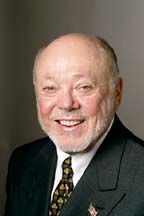
Don Tyson
Submitted by: Tyson Foods, Inc.
Don Tyson, president and chief operating officer of Tyson Foods, Inc., from 1967 to 1995, had the vision and the ambition to transform a small farm company his father founded in 1931, to the world’s largest poultry company.With Tyson’s influence and guidance, the family-owned business grew internally and completed 32 acquisitions of poultry and other food processing companies. The company grew to become the 110th largest manufacturing company on the 1994 Fortune 500 listing, with revenues exceeding $5 billion.
One of Tyson’s most influential achievements with Tyson Foods was the 1989 acquisition of Holly Farms, the nation’s third largest poultry firm, which consolidated the company’s position as the world’s largest poultry producer, and nearly doubled its already impressive 13.5 percent of the national market share.
Tyson was a visionary and turned his dreams and ideas into practical actions in many ways. He was the first in the industry to introduce value-added products, which he knew was the key to a successful and profitable business. He also provided the company’s overall corporate strategy—segmentation, concentration and domination, which continues to guide the company today and achieve impressive results.
